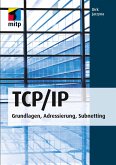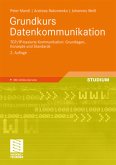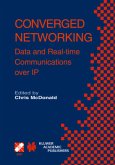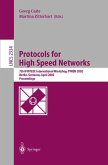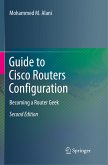The IS-IS routing protocol has gone through a high-speed evolution in recent years. Today, it is a widely deployed protocol even at smaller ISPs but because of its quick ascent it has been sparsely documented and seldom understood. As service providers add multivendor platforms from both Cisco and Juniper Networks, it is increasingly difficult to get a complete picture of the IS-IS that is actually deployed in the field. Only a book such as The Complete IS-IS Routing Protocol can provide the insight and practical solutions needed because it takes a multivendor, real-world competitive approach to implement IS-IS. The Complete IS-IS Routing Protocol is written by one of the leading authorities on IS-IS routing, Hannes Gredler, who specializes in IS-IS solutions for Juniper Networks in Europe. Hannes' co-author is the networking book veteran, Walter Goralski, whose name attracts readers across the world for his frank, lucid prose.
IS-IS has always been my favourite Interior Gateway Protocol. Its elegant simplicity, its well-structured data formats, its ?exibility and easy extensibility are all appealing - IS-IS epitomizes link-state routing. Whether for this reason or others, IS-IS is the IGP of choice in some of the world's largest networks. Thus, if one is at all interested in routing, it is well worth the time and effort to learn IS-IS. However, it is hazardous to call any routing protocol "simple". Every design decision, be it in architecture, implementation or deployment, has consequences, some unanti- pated, some unknowable, some dire. Interactions between different implementations, the dynamic nature of routing, and new protocol features all contribute to making routing protocols complex to design, write and deploy effectively in networks. For example, IS-IS started as a link-state routing protocol for ISO networks. It has since evolved sign- cantly: IS-IS has IPv4 and IPv6 (and IPX) addressing; IS-IS can carry information about multiple topologies; link attributes have expanded to include traf?c engineering para- ters; a new methodology for restarting IS-IS gracefully has been developed. IS-IS even has extensions for use in "non-packet networks", such as SONET and optical networks, as part of the Generalized Multi-Protocol Label Switching (G-MPLS) protocol suite. Understanding all of what IS-IS offers and keeping abreast of the newer protocol f- tures is a weighty endeavour, but one that is absolutely essential for all serious netwo- ing engineers, whether they are developing code or running networks.
Hinweis: Dieser Artikel kann nur an eine deutsche Lieferadresse ausgeliefert werden.
IS-IS has always been my favourite Interior Gateway Protocol. Its elegant simplicity, its well-structured data formats, its ?exibility and easy extensibility are all appealing - IS-IS epitomizes link-state routing. Whether for this reason or others, IS-IS is the IGP of choice in some of the world's largest networks. Thus, if one is at all interested in routing, it is well worth the time and effort to learn IS-IS. However, it is hazardous to call any routing protocol "simple". Every design decision, be it in architecture, implementation or deployment, has consequences, some unanti- pated, some unknowable, some dire. Interactions between different implementations, the dynamic nature of routing, and new protocol features all contribute to making routing protocols complex to design, write and deploy effectively in networks. For example, IS-IS started as a link-state routing protocol for ISO networks. It has since evolved sign- cantly: IS-IS has IPv4 and IPv6 (and IPX) addressing; IS-IS can carry information about multiple topologies; link attributes have expanded to include traf?c engineering para- ters; a new methodology for restarting IS-IS gracefully has been developed. IS-IS even has extensions for use in "non-packet networks", such as SONET and optical networks, as part of the Generalized Multi-Protocol Label Switching (G-MPLS) protocol suite. Understanding all of what IS-IS offers and keeping abreast of the newer protocol f- tures is a weighty endeavour, but one that is absolutely essential for all serious netwo- ing engineers, whether they are developing code or running networks.
Hinweis: Dieser Artikel kann nur an eine deutsche Lieferadresse ausgeliefert werden.
From the reviews of the first edition:
"The book presents a wide range of problems concerning operation of the IS-IS routing protocol based on ISO-OSI standards, and belonging to the class of dynamic Interior Gateway and link-state routing protocols. ... the material presented in the book is well organized. ... the book can be undoubtedly very useful for all networking specialists." (Jozef Wozniak, Zentralblatt MATH, Vol. 1070, 2005)
"The book presents a wide range of problems concerning operation of the IS-IS routing protocol based on ISO-OSI standards, and belonging to the class of dynamic Interior Gateway and link-state routing protocols. ... the material presented in the book is well organized. ... the book can be undoubtedly very useful for all networking specialists." (Jozef Wozniak, Zentralblatt MATH, Vol. 1070, 2005)



